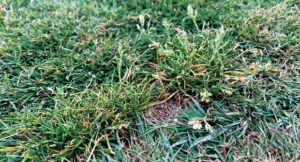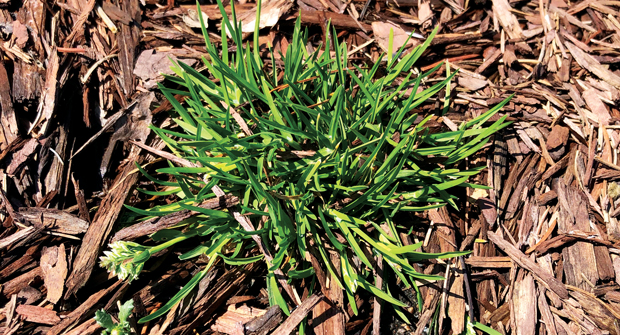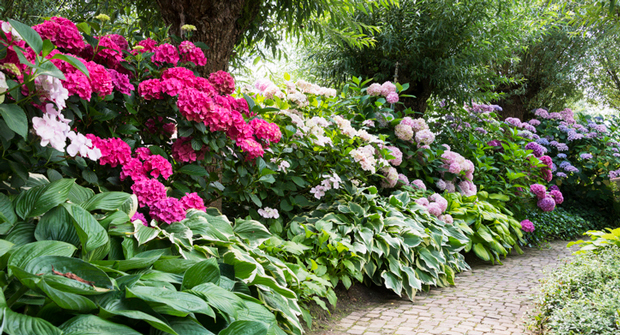In our sister publication, Golfdom magazine, we’ve discussed the ups and downs of Poa annua (also known as annual bluegrass), as it can sometimes go past its reputation as an annoying, aggressive weed and find uses on putting greens and fairways.
However, in the landscaping industry, Poa is anything but useful, and this grassy weed’s ability to adapt to almost any environment makes it one of the most difficult pests to remove for lawn care operators (LCOs).
“It has no place in the home landscape industry,” says Jay Wyrick, turf and ornamental agronomist at FineTurf in North Carolina.

One of the reasons for its difficult removal is because it’s an allotetraploid, meaning it has the genetic material of two different species — its mom and dad plants. Wyrick says this means Poa has the programming to act as both a perennial and an annual at the same time.
Wyrick also says this genetic anomaly allows Poa to adapt to different environments depending on whether functioning as a perennial or an annual is more beneficial. And, through a process called transgenerational memory, Poa can even “pass down” information to the next generation on environmental growing conditions, such as whether the parent plants were mowed or not.
Poa protection
Wyrick says the ability to control Poa is heavily dependent on the kind of turf you’re dealing with, as warm- and cool-season turf have varying amounts of options at the LCO’s disposal.
Wyrick says warm-season turf has a more straightforward time dealing with the weed through preemergent solutions like Specticle FLO and Coastal. However, cool-season turf is trickier.
“On the cool-season side of turf, we’re limited in what we can do,” Wyrick says. “If you want to do a preemergent, you typically have to skip fall aeration and seeding due to that fact, using a product like prodiamine or dithiopyr. There are some post products and some pre products that have hit or miss success.”
Wyrick also says using plant growth regulators to control seedheads in cool-season turf and bagging the clipping when you mow are other strategies that can alleviate some of the issue.
And because Poa germinates in late summer into the fall when soil temperatures drop below 70 degrees F, that’s when Wyrick says to start doing an application of your product of choice.
“We (use) the PoaConstrictor in mid-October and then again around the first of December to try to eradicate those small young plants,” Wyrick says. “That way, you don’t have that large seed bank building up.”
More than just turf damage
Besides being an ugly, invasive pest, Poa can cause further damage when it goes dormant. As the weather heats up in the summer, the weed can die off and leave unsightly brown patches in the landscape, potentially waiting to be filled with just another weed.
Outside of the lawn, however, Poa can also cause problems between the LCO and their clients, as Wyrick says customers don’t always understand how difficult the weed can be to control.

most difficult weeds to remove. (Getty Images: DNY59 / E+, boschettophotography / iStock / Getty Images Plus)
Without perfect control options, Wyrick says it’s important to explain your plan to clients and set realistic expectations on what removing Poa will look like, even if the process takes multiple seasons.
“We tell people it’s a multi-season process of lowering the seedhead count in the soil from year over year,” he says. “You’re going to deal with it for a couple of months, and then next year, we should be able to get fairly good control on it.”


